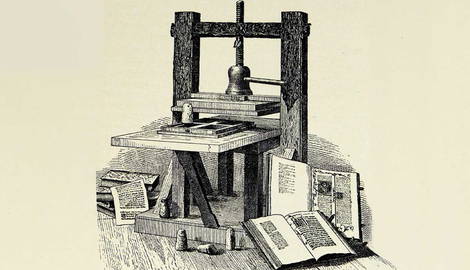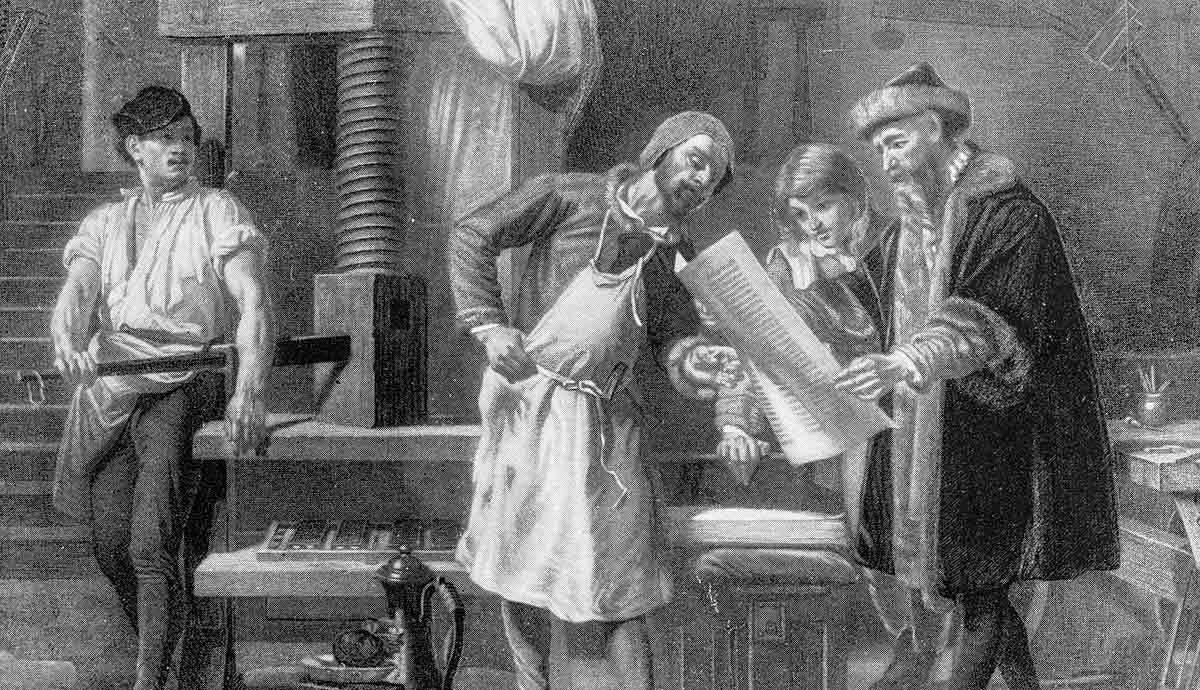
Invented in 1450, the Gutenberg printing press was a revolutionary development in the Western world that ushered in the ‘information revolution.’ For the first time in Europe, book printing was no longer a painstaking, expensive task that limited reading and writing to the wealthy and the clergy. Johannes Gutenberg made literacy accessible to the masses, spreading ideas and messages in a way the continent had not yet seen. The press facilitated movements such as the Protestant Reformation which permanently reshaped European politics and religion. Johannes Gutenberg is known today as the ‘father of mass media’ for his invention that laid the foundation for all forms of mass communication that came after him.
The Gutenberg Press Was the First Western Printing Press

A printing press relies on movable type to transfer text to paper. Before the Gutenberg press, European books were largely transcribed by monks and scribes. These copies were expensive and often only produced on commission – limiting literacy to the clergy and those wealthy enough to afford handwritten texts. While the Gutenberg press was certainly not the first printing press – movable type had existed in China since the 9th century – it was the first in Europe and came with important technological developments. Primarily, using metal type instead of wood allowed for a sharper impression, resulting in a higher quality text. The Gutenberg press was modeled after the medieval wine press – involving a large lever that would exert downward pressure on paper, transferring to it the contents of the inked type below and could print about 250 pages per hour.
The First Complete Extant Book: The Gutenberg Bible

One of the earliest books to be printed on the Gutenberg press was the bible, in 1455. Known as the Gutenberg Bible, it is widely regarded as an exemplary piece of early printing and is the first complete extant book from the West. It is not clear how many copies were originally printed but approximately forty still exist today, only three of which are completely intact. The book was printed in a gothic typeface and adorned with colorful hand-drawn headings that helped it maintain much of the character that was typical in other, handwritten, bibles at the time. Alongside being written in Latin using St. Jerome’s fourth-century translation known as the ‘Vulgate,’ the Gutenberg Bible was an entirely familiar book that was also utterly state-of-the-art in its formation.
The Gutenberg Bible represents the first time a book was made cheaply and quickly, relative to the time. This expanded the general public’s access to the written word and set the stage for an information revolution. Eventually, printed text became ubiquitous because of the press’ efficiency and accessibility. It soon made economic sense for a layperson to learn to read and write when books and pamphlets began to circulate more frequently. And, importantly, as the public learned to read over the following century, they no longer relied on the church and ruling class for information.
Setting the Stage for Western Mass Media

Johannes Gutenberg is often considered the ‘father of mass media’ for his invention. A slow-moving medium reserved only for the elite could now be shared quickly among the masses. One of the most significant early examples of the power of the printing press was the Protestant Reformation of the 1500s. Martin Luther’s Ninety-Five Theses could not have gained such a following if not for the Gutenberg Press, which made it possible to quickly print and disseminate pamphlets.
The Gutenberg Press also created a culture of mass media that far exceeded the printed word. It was common for literate members of communities in the Early Modern period to perform readings of pamphlets, for entertainment or news, in public, creating a shared media landscape. This foundation of mass media then gave way to new forms mass communication like newspapers and novels and, eventually, radio, film, and television.









